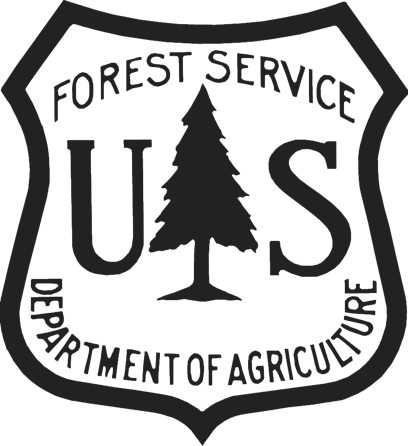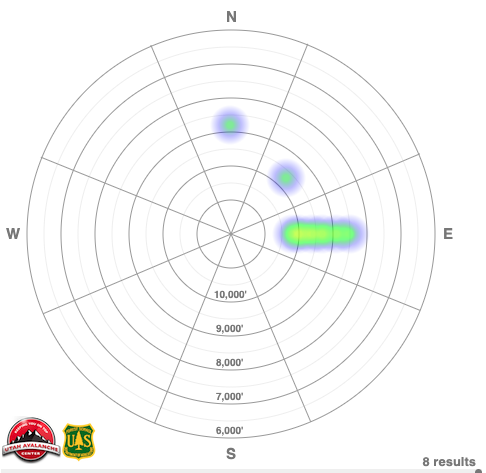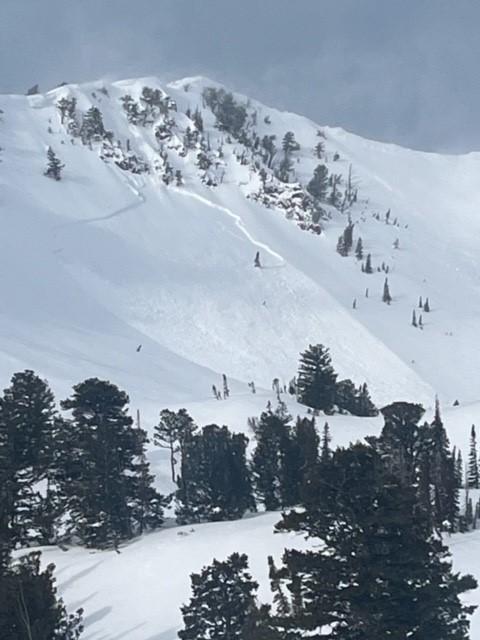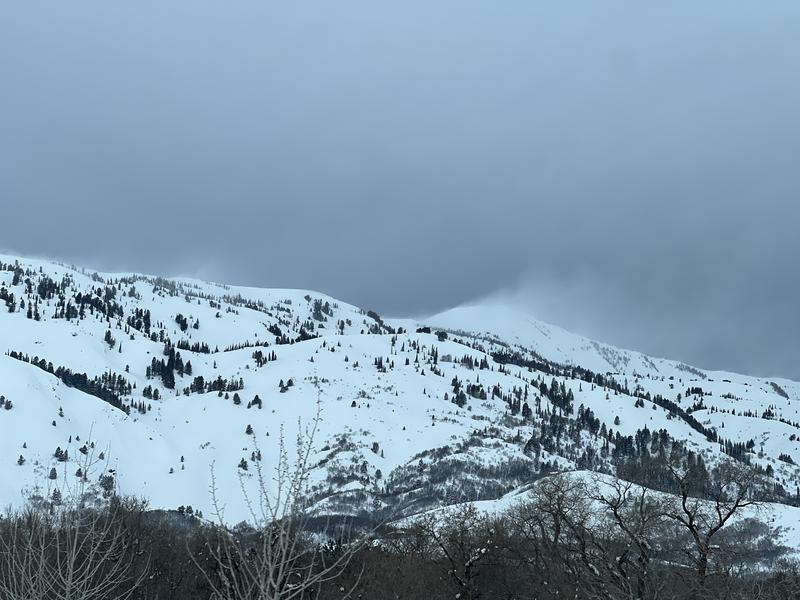This morning under overcast skies it is snowing lightly, trailhead temperatures have dropped from yesterday's high of 40˚F and are in the low 30's ˚F. Ridgetop temperatures are in the mid 20's ˚F. Winds are blowing south-southwest in the low teen's gusting to the 30's MPH at the 8,000' ridgelines and west-southwest in the 20's gusting to the low 30's MPH at the 9,000' ridgelines. Since it started snowing a few hours ago some locaitons are reporting 2-3" of new snow.
For today, skies will be mostly to partly cloudy before a storm begins moving in this evening. Temperatures will be 40-44˚F, and winds will gradually increase from a southwest direction 15 gusting to 25 MPH at the 8,000' ridgelines and 30 gusting to 50 MPH at the 9,000' ridgelines. Some mountain locations could see an additional 2-4" of snow throughout the day.
Yesterday, the snow surface at lower elevations out of the wind zone took heat and you may find a light melt-freeze crust around the compass up to 8,000' and on the sunny side of things. There was a brief window when
green-housing occurred midday yesterday.
The National Weather Service has issued a
Winter Storm Watch from noon today- Tuesday April 4th. They are forecasting 20 to 30" of snow with locally higher amounts up to 4' in the Cottonwoods and Davis County mountains.
Heat map showing backcountry avalanches that occurred on April 1 and were reported to the UAC from the Salt Lake, Ogden, and Provo area mountains.
Check out all observations
HERE.










